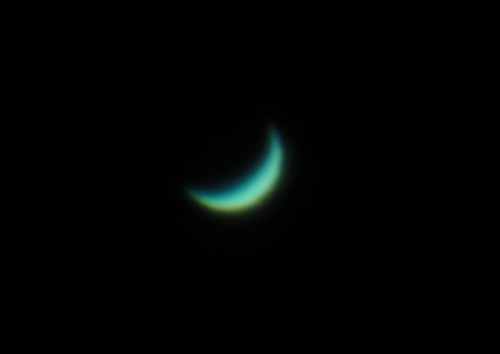
 )
)To paraphrase the philosophers Yakko, Wakko and Dot (and with apologies to Dylan): The answer, my friends, is blowing in the wind–except on Venus, where what’s blowing in the wind smells funny. Specifically, what’s blowing in the wind appears to be phosphine, and to say it smells funny is to put it mildly. It has the kind of odor that inspires colorful metaphors combining the worst physical sensory experiences with what is expected of the darkest corners of the spiritual realm. (Although actually pure phosphine is odorless, but in practice it comes mixed with phosphine derivatives which smell terrible.) And that smell is an honest signal, because the gas is toxic as well, to the point that it was used as a chemical weapon in World War I. Yet in spite of all those horrible qualities, the possible presence of phosphine on Venus has astrobiologists and other scientists excited.
We’ve talked about extraterrestrial gases as a sign of life before, when a methane anomaly was detected by a Mars rover. This time, it was spectral analysis of Venus’ atmosphere causing a stir. As with the Martian methane, there is not a clear chemical or geological explanation for the source of the phosphine, although the environment of Venus is different enough from Earth that some unknown region of chemistry is at play there. Phosphine is also reactive enough that it should become something else pretty quickly, so if there is enough to detect there must be a source generating significant quantities.
If that source isn’t a geological process or a chemical reaction, then it might be living organisms. Phosphine is toxic to us and lots of other creatures because it interferes with an oxygen-based metabolism. But some microbes live in oxygen-poor environments and have anaerobic metabolisms, meaning they work without oxygen. And some of those microbes produce phosphine as a byproduct of that metabolism. If there are Venutian microbes, they’d likely be anaerobic because there’s effectively no molecular oxygen in the air, so it’s plausible they’d be the kind to make phosphine.
But that’s still a big ‘if’ even with this new evidence. Any microbes on Venus would also need to be blowing in the wind, for starters. The surface of Venus is hot enough to melt lead; Russian probes have never lasted more than a couple of hours down there. And the atmosphere isn’t super hospitable either, what with the clouds of sulfuric acids instead of water. Again, we have examples of terrestrial microbes that can tolerate acidic environments, so it is not entirely implausible for microbes to inhabit that atmosphere. But it is not straightforward either; nothing on Earth tolerates as much acid as Venus’ atmosphere has.
And if we do find more evidence of microbes, or actually obtain samples, all the same questions we’ve discussed for a hypothetical Martian discovery would apply to Venus also. The most exciting possibility (at least for scientists; no scenario involving just microbes and not “cool aliens” would excite my teenage daughter) is an entirely separate origin of life on Venus. But to conclude such an event occurred, we’d need to rule out other possibilities, such as the microbes having been seeded on Venus from Earth or even just contamination of whatever probe collected the samples before it left. There is also the possibility that life on Earth was originally seeded from Venus roughly 4 billion years ago, a scenario which might be challenging to distinguish from some of the others. Definitive answers maybe a long time coming, if at all, but as long as we keep getting new unexplained data, it will be a fun puzzle to work on.
For more on this subject, you can read what ESN contributor Josh Swamidass wrote over at Panda’s Thumb. The article draws heavily from a discussion at Peaceful Science with one of the paper’s authors, Paul Rimmer.
Andy has worn many hats in his life. He knows this is a dreadfully clichéd notion, but since it is also literally true he uses it anyway. Among his current metaphorical hats: husband of one wife, father of two teenagers, reader of science fiction and science fact, enthusiast of contemporary symphonic music, and chief science officer. Previous metaphorical hats include: comp bio postdoc, molecular biology grad student, InterVarsity chapter president (that one came with a literal hat), music store clerk, house painter, and mosquito trapper. Among his more unique literal hats: British bobby, captain’s hats (of varying levels of authenticity) of several specific vessels, a deerstalker from 221B Baker St, and a railroad engineer’s cap. His monthly Science in Review is drawn from his weekly Science Corner posts — Wednesdays, 8am (Eastern) on the Emerging Scholars Network Blog. His book Faith across the Multiverse is available from Hendrickson.

Leave a Reply